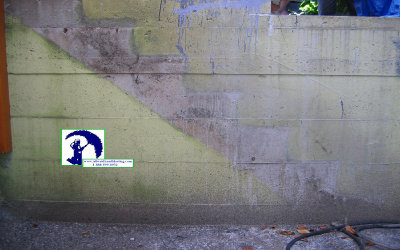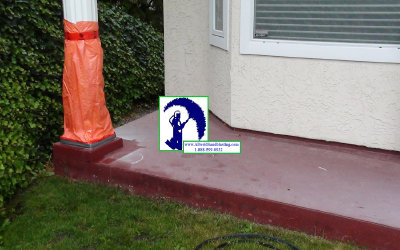Through the process of injecting water into the blast stream Vancouver Mobile sandblasting can cut down a percentage of dust and air-born contaminants. Please refer to our wet sandblasting video's page to view our sandblasters in action. You can also drag your mouse over the images to see before and after photo's of wet sandblasting projects.
Injecting water into the blast stream while sandblasting can be useful when sandblasting concrete, brick, masonry surfaces, wood (removing mold), and ships (removing marine growth). Wet sandblasting is also used in the removal of hazardous material such as lead paint. The water can help cut down on the amount of airborne particles that may be hazardous.
Lead paint can be removed but must only be removed by professionals. Vancouver Mobile Sandblasting has the experience needed to remove lead paint from industrial surfaces. Lead paint is extremely dangerous to adults, children and pets. When removing hazardous materials containment must be in place.
Wet blasting uses
compressed air and a standard blast machine to propel abrasive, with just enough water added at the nozzle to suppress the dust. Dust
suppression is extremely important as dust may contain silica, lead or other hazardous materials. Silica dust is released when sandblasting
concrete, concrete, cement, mortar, masonry, brick, tile, asphalt (containing rock and stone), fibrous-cement board, granite, sandstone,
and slate.
Vancouver Mobile Sandblasting has been working with concrete since 1984. We have the expertise and knowledge that is required when dealing with concrete. Our staff is well versed in the importance of surface preparation. When dealing with concrete many precautions need to be considered. Professionalism is must.
Both new and existing concrete needs to be be first viewed for the following: form marks, discoloration, mildew, surface staining and efflorescence. After the initial consultation Vancouver Mobile Sandblasting will inform the customer of the potential risks involved as well as the options available to them when considering sealing the concrete.
Silica dust exposure may result in silicosis. Please read our Silica page for more in depth information.
Wet Sandblasting can produce the same hard hitting force as dry abrasive blasting. Wet Sandblasting systems have a control at the nozzle to adjust water pressure and volume from a fine mist to a full water wash. The volume of water can be regulated to match the amount of dust being produced.
Some surfaces require pressure washing prior to sandblasting. The purpose of this is to wash away any salts, chlorides,
and other contamination which may cause coatings to fail.




